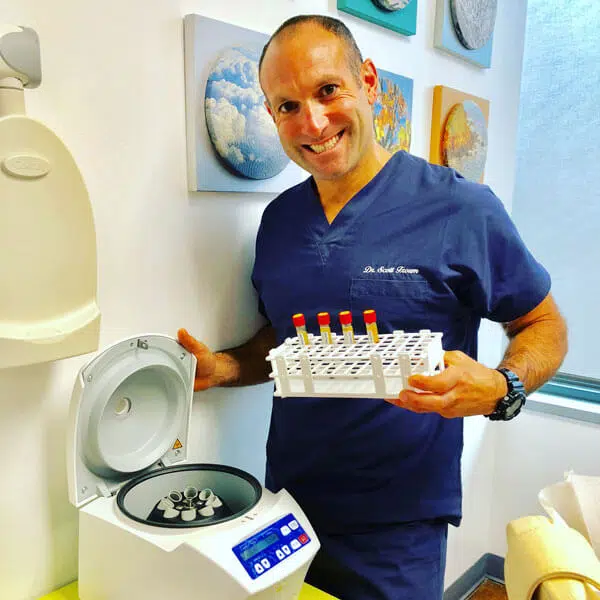Dr. Scott Froum provides bone grafting services to patients in Midtown NYC. Contact us at 212-751-8530 to learn more or schedule an appointment.

Types of Bone Grafts
Why Is Dental Bone Grafting Needed
When a patient develops gum disease the bacteria around the teeth can destroy the bone holding the tooth in the mouth and a bone defect can develop. Bone grafting can repair these defects and help save your teeth. In addition, When a tooth is lost, the surrounding jaw bone is often lost over time. Jaw bone can dissolve in both height, width, and density. Patients without enough jaw bone mass are not candidates for dental implants. Bone grafting is often performed to reverse bone loss or enhance existing bone, allowing for the placement of dental implants after the bone graft has healed and created the necessary foundation for the implants.
Bone grafting surgery may also be performed to correct problems resulting from:
- Trauma
- Birth defects
- Removal of a tumor or cyst
- Tooth loss and subsequent loss of bone in the related jaw area
- Dental implant loss and subsequent loss of bone in the related jaw area
What Are the Types of Bone Grafts?
In some cases, bone grafts can be combined with growth factors and proteins such as Platelet Rich Fibrin, Platelet Derived Growth Factor, Enamel Matrix Derivative, or Bone Morphogenic Protein. These growth factors enhance the bone graft making them more successful.
What are the Kinds of Bone Grafting Procedures?
Frequently Asked Questions
How painful is a dental bone graft?
Following a dental bone graft, you may have slight discomfort, swelling and bruising. These are normal side effects that should diminish in a few days. Any discomfort can often be managed with over-the-counter pain relievers. Antibiotics will often be prescribed for people getting bone grafts.
Are you put to sleep for a dental bone graft?
Typically, placement of a bone graft does not require being put to sleep and it can be performed with local anesthesia. Anti-anxiety medications can be given as well to relax you. For those that are extremely nervous, oral and IV sedation is an available option.
Can dental bone grafts fail?
Dental bone grafts have a very high success rate. However, as with any procedure, failures can occur. Higher failure rates can happen in people with compromised immune systems, poor healing, on medications that prevent healing, and/or smoke and use tobacco products.
What are the advantages of dental bone grafts?
Dental bone grafts can save your teeth that have gum and bone tissue loss and increase your likelihood of getting dental implants or other restorative treatments.
What are the risks or complications of dental bone grafts?
Bone grafts in your mouth are generally safe. However, the procedure carries some risks, including infection, bleeding, swelling, bruising, and pain. If the bone graft doesn’t take, it may have to be removed and replaced.
How long does it take for a bone graft to work?
Although you will most likely heal and feel better within a week to 10 days, complete dental bone graft healing can take between three and 6 months. Full healing depend on several factors, including the type of graft, if it was combined with growth factors, the area in which the graft was placed, the size of the dental bone graft, and your body’s healing time.
When can I go back to work or school?
In most cases, people can return to work or school the next day after the procedure. In some instances of bruising or swelling, you may want to take off the next day after surgery.
When should I contact my doctor after a bone graft?
If you’ve had a dental bone graft placed and you are experiencing severe pain, severe swelling, pus coming from the surgical site, you are running a fever, and/or a bad smell is coming from the area, contact your dentist for advice.
